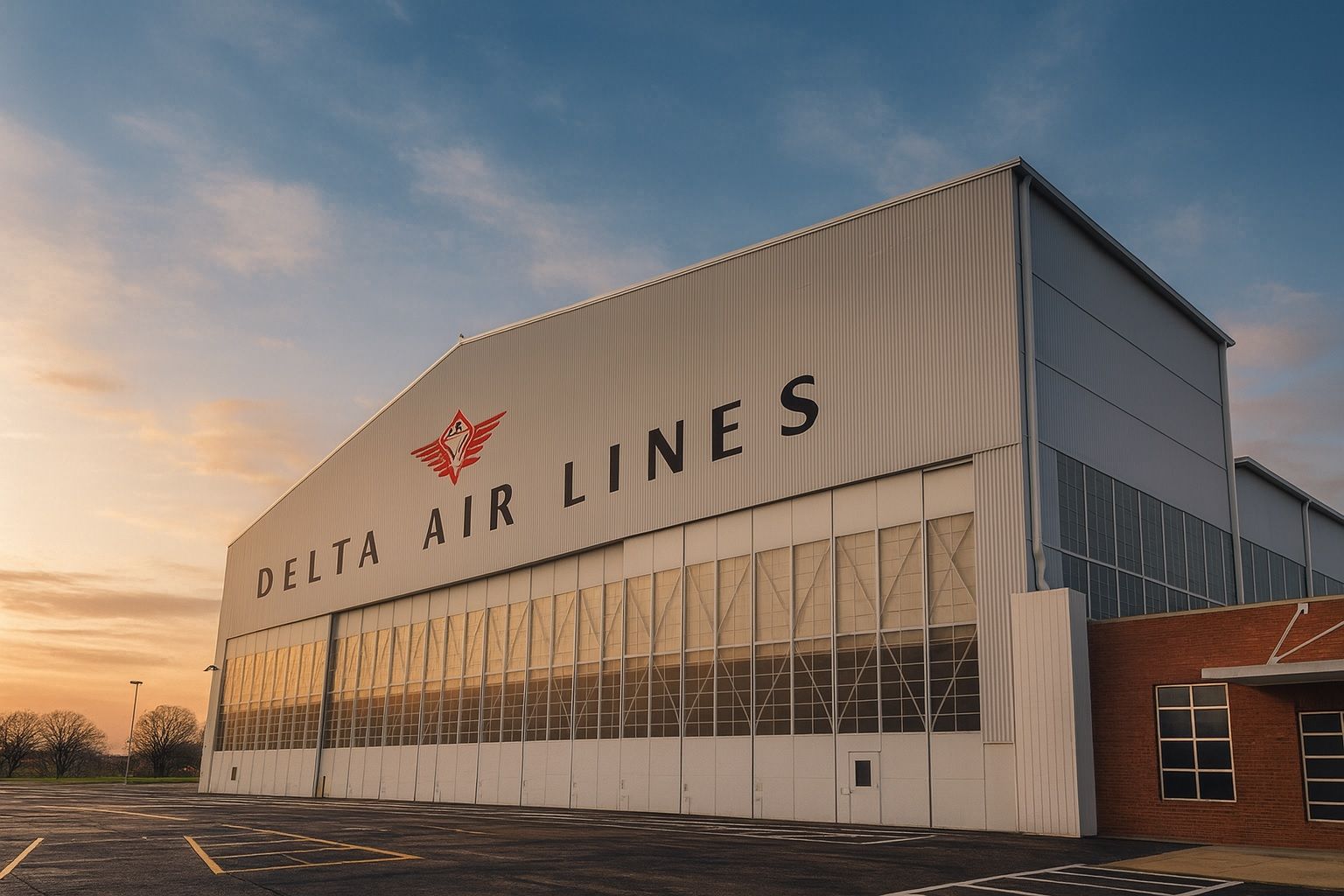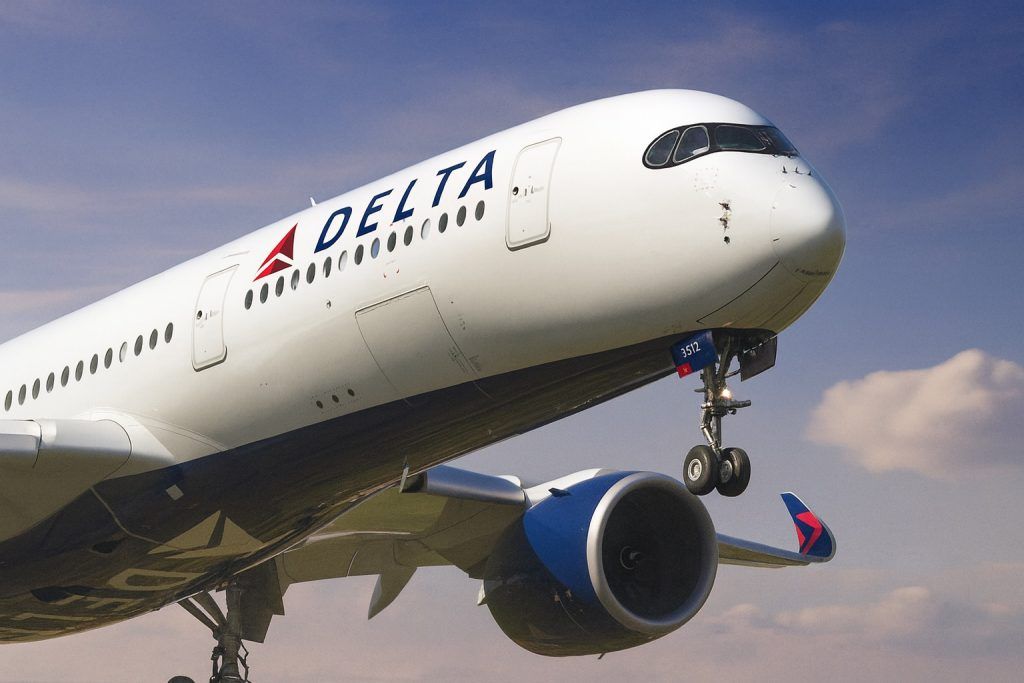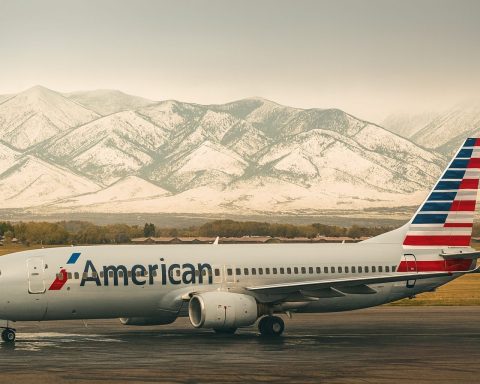- Earnings Beat Expectations: Delta Air Lines posted third-quarter 2025 net income of $1.42 billion (GAAP), or $2.17 per share, with adjusted earnings of $1.71 per share – handily topping analysts’ $1.52 estimate [1]. Revenue hit $16.67 billion, also above forecasts (~$15.8 billion) [2], thanks to a strong summer travel season.
- Higher Fares & Premium Boom: A sharp cutback in industry seat capacity has driven up ticket prices, boosting Delta’s unit revenue (revenue per seat mile) after a dip last quarter [3]. Premium cabins are thriving – Delta’s premium ticket revenue jumped ~9% year-over-year and now makes up 43% of its passenger revenue [4] – while sales in the budget main cabin fell by a few percent [5]. Business travel is rebounding, with corporate bookings improving across all sectors in recent weeks [6].
- Bullish Outlook Raised: Momentum is carrying into the holidays. Delta issued an upbeat Q4 forecast, expecting $1.60–$1.90 adjusted earnings per share (midpoint ~$1.75, above the ~$1.66 consensus) and revenue growth of 2–4% year-over-year [7]. It also lifted its full-year guidance to roughly $6 EPS for 2025 [8], ahead of Wall Street’s ~$5.8 estimate. CEO Ed Bastian said “momentum is continuing” and Delta is “well positioned” to deliver revenue growth and margin expansion next year [9] [10].
- Stock Soars on Results: Investors cheered the news – Delta’s stock jumped over 5% after the earnings beat [11]. The optimism spread to other airlines, with shares of American, United, JetBlue and Alaska Air all climbing 2–5% in sympathy [12]. Delta’s stock is up about 25–30% year-to-date and recently reinstated a quarterly dividend [13] [14], underscoring management’s confidence. Some analysts see Delta as a standout “rare value and resilience” play even after this year’s rally [15].
- Industry Tailwinds & Risks: Delta’s dominance in premium travel and diversified revenues (e.g. its $2 billion in AmEx credit-card partner proceeds in Q3 [16]) give it resilience [17]. With ultra-low-cost rival Spirit Airlines bankrupt and slashing its fleet, industry capacity is tightening – a trend that should keep fares high [18]. However, headwinds remain: a prolonged U.S. government shutdown could strain air traffic control staffing and dent travel demand (13,000+ flights were delayed in the first week of the shutdown) [19]. Delta and its peers are warily watching Washington, as an extended impasse could “worsen… disruptions” into the busy holiday season [20] [21].
Delta Delivers Soaring Q3 Results
Delta Air Lines kicked off airline earnings season with a strong September-quarter performance that blew past projections. The carrier earned $1.42 billion in net income for Q3 2025 – almost 60% higher than the year-ago period – translating to $2.17 per share (GAAP) [22]. Excluding one-time items, Delta’s profit was $1.71 per share, comfortably above the ~$1.52 analysts expected [23]. Revenue for the quarter reached $16.67 billion, beating forecasts (~$15.8 billion) and marking a ~8% increase year-on-year [24]. These results came in at the top end of management’s guidance, as Delta benefited from robust travel demand over the summer and strong operational execution. “We delivered September quarter results at the top end of our expectations on a combination of strong execution and improving fundamentals,” said CEO Ed Bastian [25]. The airline achieved a healthy operating margin near 10% this quarter [26], a notable feat given rising labor and fuel costs industry-wide.
Analysts had anticipated solid earnings, but Delta’s beat on both sales and profit showcases its post-pandemic recovery gaining altitude. The company’s operating income of $1.7 billion this quarter reflects the booming demand for air travel – especially for higher-priced tickets. Notably, Delta’s performance outshone many predictions that inflation and economic jitters could crimp travel. Instead, consumers kept flying and paying up for premium experiences, helping Delta grow profit even as it navigated cost pressures. The airline’s adjusted earnings were ~12% higher than consensus (a positive “surprise” of +12.5% per Zacks Research) [27], while revenue beat the Street by ~5% [28]. This earnings beat is an encouraging sign not just for Delta, but for the broader airline industry – often seen as a bellwether for travel demand and consumer spending. In fact, Barron’s noted that Delta’s strong report could help the beaten-down airline sector “fly into the year-end” after a turbulent first half [29].
Premium Travel and Business Flyers Drive Gains
A key highlight of Delta’s quarter was the surging demand for premium cabins and services. Travelers are increasingly opting for pricier options like first class, Delta One suites, and Comfort+ seats – and it shows in the results. Delta’s premium-cabin revenues jumped ~9% versus the same quarter last year [30]. High-paying passengers in business and first class now account for about 43% of Delta’s passenger revenue [31], an extraordinary share that reflects Delta’s focus on attracting upscale travelers. By contrast, revenue from the traditional economy (main cabin) fell around 4% year-over-year [32] – indicating that while overall passenger volumes are strong, growth is coming from higher-end customers rather than bargain hunters. This trend aligns with what airlines are seeing globally: leisure travelers have shown willingness to spend more on comfort post-pandemic, and corporate travelers are returning with a preference for premium seats.
Delta reported that business travel is finally on the upswing, after lagging leisure demand for much of the past two years. “Sales have accelerated over the past six weeks across all geographies,” the airline noted, highlighting a rebound in corporate bookings across all sectors [33]. In other words, business flyers from every industry – who had been cautious amid COVID-19 and economic uncertainty – are taking to the skies again. This is a significant positive development, as corporate travel historically provides a large chunk of airline profits (business travelers pay higher fares on average, often for last-minute trips). Delta’s diversified customer base – spanning vacationers, corporate accounts, and high-end luxury travelers – enabled it to capitalize on the broad travel recovery in Q3.
Another engine of Delta’s growth is its lucrative American Express partnership. Delta’s co-branded AmEx credit card program continues to funnel substantial revenue to the airline. In the September quarter, Delta reaped $2 billion in remuneration from AmEx – supported by a double-digit surge in cardholders’ spending [34]. This $2 billion from its loyalty and credit card business now represents a critical income stream (in addition to ticket sales). It’s part of Delta’s strategy to build diversified revenue streams beyond just selling plane tickets. In fact, analysts point out that Delta consistently generates more than half of its revenue from non-ticket sources – including its loyalty program, premium cabin upsells, cargo shipping, and even aircraft maintenance services for other companies [35]. These ancillary streams provide a buffer in tough times. “The company’s diversified revenue streams have made it better equipped than some of its rivals to shield its earnings,” noted analysts in the wake of the results [36]. This resilience was evident in Q3, as Delta managed to grow profit despite some competitors struggling with higher costs and pricing pressures.
Higher Fares Lift Revenue as Capacity Stays Tight
Delta’s strong quarter was also underpinned by a favorable industry supply-demand balance. Airline seat capacity remains constrained in the U.S. market, which has given carriers like Delta greater pricing power. Over the past year, many airlines slowed their expansion plans – and some budget airlines even cut back – to avoid oversupplying the market with seats. A “sharp reduction” in domestic flight capacity has naturally driven up ticket prices, Delta noted [37]. In Q3, this helped Delta increase its unit revenue (revenue per available seat-mile) after a decline in that metric in the previous quarter [38]. In plain terms, with fewer seats chasing high travel demand, airlines were able to charge more per ticket and fill planes, boosting revenue.
One dramatic example is Spirit Airlines, a once-aggressive low-cost carrier that filed for Chapter 11 bankruptcy protection this month amid financial turmoil. Spirit is shrinking its operations drastically – planning to shed nearly half its fleet – after overexpansion and fare wars left it unprofitable [39] [40]. “Industry overcapacity among low-cost carriers combined with low passenger demand… led the company to bankruptcy,” Spirit’s CFO explained of their woes [41]. For giants like Delta, the fallout of a budget airline’s retreat can be a tailwind: with Spirit’s discount flights disappearing, there is less pressure to match ultra-low fares on competing routes. Delta cited the “bankrupt Spirit Airlines shrinking its operations” and rivals’ moderation of growth as factors that should help keep Delta’s fares and unit revenues elevated in the coming quarter [42]. In the December quarter, Delta expects its unit revenue (a key pricing gauge) to remain positive year-over-year, whereas earlier in 2025 it had briefly turned negative when too many seats chased demand [43].
The pricing environment now strongly favors airlines with robust networks and pricing power – and Delta is taking full advantage. The carrier has been deliberately growing its premium seating and cutting back on cheap seats to tilt its capacity toward higher-revenue opportunities. Encouraged by strong returns, Delta plans to expand its premium seat offerings significantly while scaling back main cabin capacity going forward [44]. Essentially, Delta is allocating more real estate on its planes to first, business, and premium economy classes (which sell for a premium), and a bit less to the no-frills economy section. This up-gauging strategy should further boost average fares. It also aligns with shifting consumer trends: many travelers are willing to pay extra for added space and perks, and Delta’s brand skews toward higher-income flyers compared to ultra-low-cost carriers. By keeping the supply of seats in check – and capitalizing on rivals’ pullbacks – Delta and other major airlines have been able to increase fares without dampening demand significantly. That yield strength was on full display in Q3 and looks to continue into year-end.
Upbeat Forecast: “Strong” Holiday Quarter Ahead
After such a solid quarter, Delta’s management struck an optimistic tone about the final quarter of 2025 and beyond. The airline issued bullish guidance for Q4, signaling that demand remains resilient even as the peak summer season gives way to the fall and holidays. Delta forecasts an adjusted profit of $1.60 to $1.90 per share for the December quarter [45]. The midpoint of that range (~$1.75) is comfortably ahead of Wall Street’s consensus (~$1.66), indicating Delta expects another earnings beat in Q4 if trends hold [46]. Delta also anticipates October–December revenue will rise 2% to 4% versus the same period last year [47] – a sign the airline sees no letup in travel appetite. Notably, CEO Ed Bastian suggested Delta could be on track for one of its best holiday seasons ever, thanks to robust demand from both leisure vacationers and business travelers upgrading to premium cabins. “Momentum is continuing into the final stretch of our Centennial year, positioning us to deliver strong December quarter earnings,” Bastian said, adding that Delta is “well positioned” to keep growing revenue and expanding profit margins in 2026 [48].
This confident outlook is a stark turnaround from earlier in 2025. In the spring, economic uncertainty and recession fears had clouded the industry’s view, prompting Delta and other U.S. carriers to pull their financial forecasts for a time [49]. Now, with travel spending recovering and the economy avoiding a downturn so far, Delta not only reinstated guidance but raised its full-year expectations. The company now predicts about $6 in adjusted earnings per share for full-year 2025 [50]. By comparison, Delta’s prior guidance (issued mid-year) capped out at $5.75 on the high end, and analysts were expecting roughly $5.80 [51]. Hitting $6 would mark a strong finish to Delta’s centennial anniversary year, and would set a baseline for even higher profits in 2026. Indeed, Delta’s CEO believes the airline can achieve top-line growth and margin expansion next year in line with its long-term plan [52]. Some industry experts are also growing more upbeat. Bank of America recently noted Delta’s “significant improvement” in revenue trajectory and upped its forecasts, citing the carrier’s premium revenue strength as a key driver [53]. All told, Delta’s guidance implies it will surpass pre-pandemic revenue and profit levels, underscoring that the airline has fully shaken off the pandemic slump and is pushing into new record territory.
However, Delta did flag one major caveat: its rosy outlook “does not factor in” any potential hit from the ongoing U.S. government shutdown [54]. (As of early October, the federal government is partially shut down due to a budget impasse in Washington.) The airline industry learned in past shutdowns that prolonged government closures can disrupt air travel – primarily by straining the FAA and TSA, which must continue working without pay. Already in the first week of the current shutdown, more than 13,000 flights were delayed across the U.S. as staffing shortages began to emerge at air-traffic control facilities [55]. If lawmakers don’t resolve the funding stalemate soon, those issues could worsen. Some travelers may delay or cancel trips to avoid airport chaos, and airlines might face scheduling constraints. During the record 35-day shutdown in 2019, Delta said it took a $25 million revenue hit from reduced travel [56]. This time around, industry groups estimate the shutdown could cost the travel sector about $1 billion per week if it drags on [57]. So far, Delta’s management says operations haven’t seen significant impact [58] – airports remain open and security lines staffed – but they are watching warily. In short, a protracted shutdown poses a risk to the otherwise strong outlook for Q4. Bastian urged a quick resolution in Washington, noting that while Delta hasn’t felt “any impacts at all” yet, further air traffic controller shortages or unpaid TSA staff outages could hit the industry [59].
Outside of the political arena, Delta appears to be firing on all cylinders. The airline is leveraging its scale and brand to capture high-paying customers, and it’s not shying away from ambitious targets. Management’s upbeat forecast and restoration of shareholder rewards (including a modest dividend reintroduced this year [60]) signal confidence that Delta’s earnings trajectory is on a steady climb. The company also continues to invest in future initiatives – from upgrading its fleet to dabbling in cutting-edge travel tech. (For example, Delta has partnerships to eventually integrate electric air taxis for short airport transfers [61], an eye toward differentiating its premium service down the line.) These forward-looking moves, combined with Delta’s solid execution in its core business, have many analysts convinced that the airline can maintain altitude even if economic headwinds pick up. “Delta’s competitive advantages and differentiation have never been more evident,” CEO Bastian said, praising his team for elevating the customer experience and extending Delta’s industry leadership [62].
Market Reaction and Analyst Views
Wall Street reacted with enthusiasm to Delta’s report. Delta’s stock (NYSE: DAL) jumped about 5–6% in pre-market trading on Oct. 9, 2025, immediately after the earnings release [63]. By the opening bell, shares were trading around the $60 level, their highest in over a year and a sharp climb from the mid-$50s range just days prior. This rally added to an already strong run for Delta’s stock in 2025 – shares have climbed roughly 25–30% year-to-date, outperforming the broader market. Notably, Delta’s surge lifted other airline stocks as well: investors took the strong results as a positive omen for peers like United Airlines, American Airlines, JetBlue, and Alaska Air, which all saw 2–5% stock gains on the day [64]. The implication is that Delta’s success signals healthy travel demand sector-wide, easing fears that rising costs or macroeconomic issues were undercutting Americans’ appetite for flying.
Financial analysts largely view Delta as leading the pack among legacy airlines, and the Q3 beat reinforced that perception. JP Morgan analysts called Delta’s results “impressive” and noted the margin outperformance given higher labor costs (Delta inked generous new union contracts this year) – evidence that strong revenue can more than offset expense growth. Bank of America analysts highlighted Delta’s higher premium sales and raised loyalty revenue, arguing these are structural advantages that should continue to buoy results into 2026 [65]. Several analysts have accordingly bumped up their price targets for DAL stock into the mid-$60s or higher, suggesting further upside. One Seeking Alpha contributor went as far as to praise Delta’s “resilience in [the] airline bankruptcy wave,” pointing out that while smaller rivals falter, Delta’s robust cash generation and strong brand give it rare stability in the industry [66]. Even after the recent rally, Delta shares trade at a moderate earnings multiple, and some see room for the stock to climb if the company hits its $6 EPS goal this year (and potentially $7+ in 2026). Barron’s noted that the entire airline sector could get a lift from Delta’s optimism, writing that a solid Delta quarter “could fly [airline stocks] into the year-end” after a choppy first half [67].
To be sure, analysts also caution that airlines are not out of the woods on challenges. They will be watching fuel prices – jet fuel has been volatile, and any spike could squeeze margins if fares don’t keep pace. Additionally, as international travel continues to recover, long-haul demand (which is lucrative for Delta) needs to stay strong; so far, trans-Atlantic and Pacific routes have been a bright spot. Delta’s strategic investments, like its refinery subsidiary (to hedge fuel costs) and fleet renewal with more fuel-efficient jets, are aimed at managing these variables. Economic conditions remain a wild card: a significant slowdown or recession in 2026 could cool both leisure and corporate travel. But at this juncture, the consensus is that Delta has momentum on its side. “Delta is on track to finish the year with record performance,” Yahoo Finance’s Pras Subramanian reported, citing Bastian’s view that premium and business travel strength will make this holiday quarter one for the record books [68] [69].
Overall, Delta’s Q3 2025 results and commentary paint a picture of an airline hitting its stride. Travel demand remains robust, especially in the high-value segments Delta targets. The company is translating that demand into higher revenues, solid profits, and confident forecasts. Bastian summed it up by saying Delta’s poised to deliver on its long-term financial framework of growth and margin gains [70]. If the economy stays aloft and external shocks (like the government shutdown) resolve without too much damage, Delta appears set for a strong takeoff into 2026, much to the relief of its investors, employees, and customers alike.
Sources: CNBC/Associated Press [71] [72]; Delta Air Lines Press Release [73] [74]; Reuters [75] [76] [77]; Yahoo Finance [78]; TS2 Tech [79]; Reuters (Spirit Airlines context) [80]; Barron’s/MarketWatch [81]; Seeking Alpha [82].
References
1. www.marketscreener.com, 2. www.marketscreener.com, 3. www.reuters.com, 4. www.reuters.com, 5. www.reuters.com, 6. www.reuters.com, 7. www.reuters.com, 8. www.marketscreener.com, 9. news.delta.com, 10. www.reuters.com, 11. www.reuters.com, 12. www.reuters.com, 13. stockanalysis.com, 14. stockanalysis.com, 15. stockanalysis.com, 16. www.reuters.com, 17. www.reuters.com, 18. www.reuters.com, 19. www.reuters.com, 20. www.reuters.com, 21. ts2.tech, 22. www.marketscreener.com, 23. www.marketscreener.com, 24. www.marketscreener.com, 25. news.delta.com, 26. news.delta.com, 27. www.zacks.com, 28. www.zacks.com, 29. stockanalysis.com, 30. www.reuters.com, 31. www.reuters.com, 32. www.reuters.com, 33. www.reuters.com, 34. www.reuters.com, 35. www.reuters.com, 36. www.reuters.com, 37. www.reuters.com, 38. www.reuters.com, 39. www.reuters.com, 40. www.reuters.com, 41. www.reuters.com, 42. www.reuters.com, 43. www.reuters.com, 44. www.reuters.com, 45. www.reuters.com, 46. www.reuters.com, 47. www.reuters.com, 48. news.delta.com, 49. www.reuters.com, 50. www.marketscreener.com, 51. www.marketscreener.com, 52. www.reuters.com, 53. ca.finance.yahoo.com, 54. www.reuters.com, 55. www.reuters.com, 56. www.reuters.com, 57. ts2.tech, 58. stocktwits.com, 59. stocktwits.com, 60. stockanalysis.com, 61. ts2.tech, 62. news.delta.com, 63. www.reuters.com, 64. www.reuters.com, 65. ca.finance.yahoo.com, 66. stockanalysis.com, 67. stockanalysis.com, 68. www.reuters.com, 69. news.delta.com, 70. news.delta.com, 71. www.marketscreener.com, 72. www.marketscreener.com, 73. news.delta.com, 74. news.delta.com, 75. www.reuters.com, 76. www.reuters.com, 77. www.reuters.com, 78. www.reuters.com, 79. ts2.tech, 80. www.reuters.com, 81. stockanalysis.com, 82. stockanalysis.com










